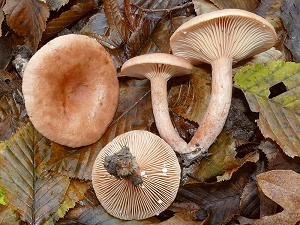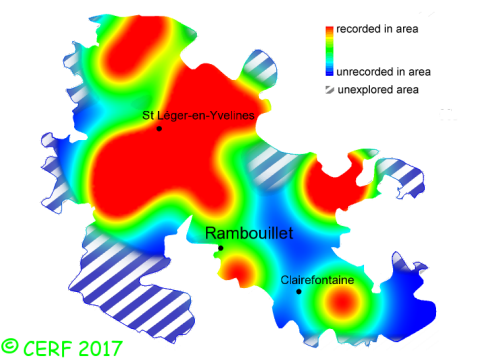| Lactarius decipiens Quél. |
|
|
|
|
|
|
The cap is brown pink, reddish orange, with a central umbo. The cap surface is smooth, not viscid nor sticky. The stem is same colour as cap, without ring. The flesh is whitish, turning yellow when exposed to air; its taste is mild then bitter then acrid; the odour is of geranium; its texture is grainy (breaking like a chalk stick), exuding when cut a white milk, turning yellow in 30mns. The gills are yellow to flesh pink, decurrent, crowded (nb of gills per 90° ~ 24 ). The spore print is white. This species is mycorrhizal. It grows in dry deciduous or coniferous woods, with hornbeam, oak, beech, or various coniferous or deciduous trees. The fruiting period takes place from July to November.
Distinctive features : ochre-pink to flesh-buff cap, not banded; white milk turning yellow slowly when exposed to air (from 1 to 30 mns according to authors, straw-yellow in 10mns), mild then bitter and very acrid; odour of pelargonium; on dry grounds Lactarius decipiens is infrequent and widely present in the forest of Rambouillet, and is infrequent, more generally speaking . | ||
|
page updated on 14/01/18

